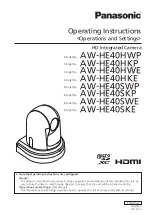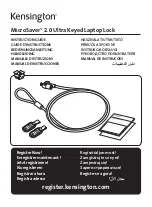
2
1. Introduction
1.1. Benefits
The specific benefits of PowerSafe
®
TS batteries for renewable
energy applications are as follows.
•
Cycling
(one “cycle” consists of a discharge, of any depth,
followed by a recharge)
•
Overcharge ability
•
Cycling in state of discharge
•
Low rate of self-discharge
•
Large electrolyte reserve
PowerSafe
®
TS cells are designed for applications where the battery
may undergo repeated cycling with daily depths of discharge of up
to 35% of capacity C
120
(such as rural settlements, communications
systems and lighting systems etc.).
1.2. Cell Design
The PowerSafe TS range of single cells offers high performance,
long-life solutions for renewable energy applications.
PowerSafe TS cells are based on proven vented technology and
designed for renewable energy applications that require maximum
cycle life with the highest level of reliability. They are particularly
suitable for use in solar energy installations, ensuring a continuity of
electrical supply during the hours of darkness or during periods of
reduced sunshine.
The Powersafe TS are flooded batteries consuming water and
require regularly maintenance watering (see section 5).
Demineralised water needs to be added at intervals which depends
on operating conditions and electrolyte reserve.
Reduced maintenance is achieved through the use of additional
electrolyte, which means cells only have to be topped-up once a
year. This helps to keep down maintenance costs and makes them
an ideal solution for many remote or unmanned locations.
Tubular positive plates are widely used in batteries for particularly
demanding applications. In the TS range they have been optimised
to give an extended cycle life and increased capacity.
Note operating
instructions
Danger. Cells are
heavy.
Make sure they are
safely installed. Only
use suitable transport
and lifting equipment
Risk of explosion or fire.
Avoid short circuits
When working on
batteries, wear safety
glasses and
protective clothing
Electrical hazard
Wash all acid splash
in eyes or on skin with
plenty of clean water and
seek immediate medical
assistance
No smoking.
Do not allow naked
flames, hot objects
or sparks near the
battery, due to the risk
of explosion or fire
Electrolyte is highly
corrosive
.
Used batteries contain valuable recyclable materials. They must not be disposed of with the domestic waste but as
special waste. Modes of return and recycling shall conform to the prevailing regulations in operation at the site where
the battery is located.
Safety precautions
Batteries give off explosive gasses. They are filled with dilute sulphuric acid, which is very corrosive. When working with sulphuric acid,
always wear protective clothing and glasses. Exposed metal parts of the battery always carry a voltage and are electrically live (risk of short
circuits). Avoid electrostatic charge. The protective measures according to EN 50272-2 and IEC 62485:2010 must be observed.
Recycling and disposal of used batteries
Warranty
Any of the following actions will invalidate the warranty - non-adherence to the Installation, Operating and Maintenance Instructions.
Repairs carried out with non-approved spare parts. Applications of additives to the electrolyte. Unauthorised interference with the
battery.
Handling
TS batteries are supplied filled & charged
or moist charged, and must be unpacked
carefully to avoid short-circuit between
terminals of opposite polarity. The
cells are heavy and must be lifted with
appropriate equipment.
Keep Flames Away
Discharge any possible static
electricity from clothes by touching
an earth connected part.
Tools
Use tools with insulated handles.
Do not place or drop metal objects onto the
battery.
Remove rings, wristwatch and metal articles
of clothing that might come into contactwith
the battery terminals.
Содержание PowerSafe TS
Страница 1: ...Sustainable Solutions PowerSafe TS Operation Guide for Solar Applications...
Страница 7: ...7 Notes...

























